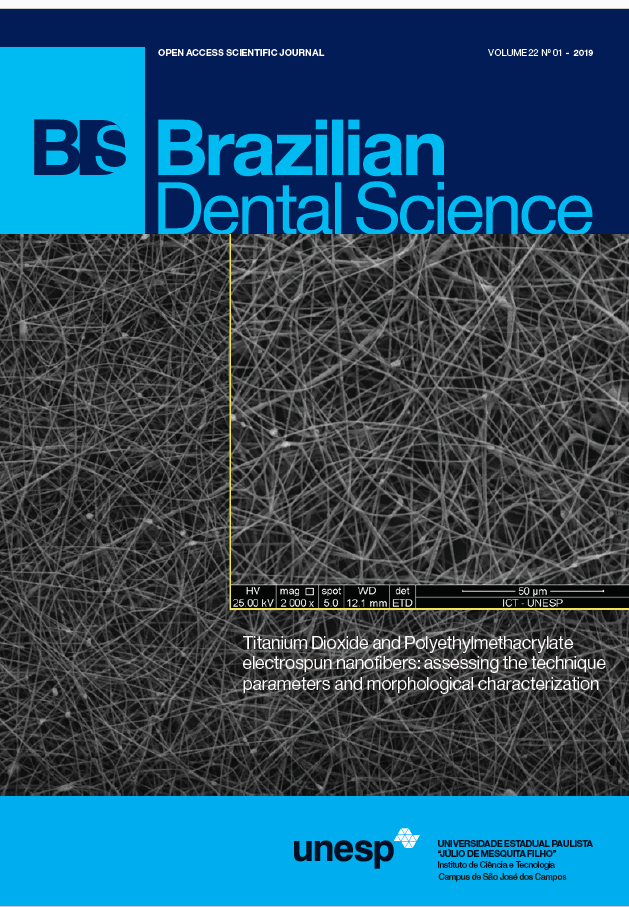Use of Cone Beam Computed Tomography to Identify the Morphology of Maxillary and Mandibular Premolars in Chennai Population
DOI:
https://doi.org/10.14295/bds.2019.v22i1.1673Abstract
Objective: The complex root canal anatomy is inherently colonised by microbial flora. Endodontic treatment success is always related to adequate disinfection of the root canal space, which ultimately affects the treatment outcome. A thorough understanding of the external and internal root canal anatomy by using adequately imaging modalities is essential before planning any treatment. The aim of this study was to investigate the number and morphology of the root canals of maxillary and mandibular premolars in Chennai population. Material and Methods: Full-size cone-beam computed tomographic images were randomly collected from 100 patients, resulting in a total of 200 first and 200 second maxillary premolars as well as 200 first and 200 second mandibular premolars. All the eight premolars were analysed in single patients, who underwent cone-beam computed tomography scanning during pre-operative assessment (before implant surgery, orthodontic treatment, diagnosis of dental-alveolar trauma or difficult root canal treatment). Total number of roots and root canals, frequency and correlations between men and women were recorded and statistically analysed by using chi-square tests. The root canal configurations were rated according to the Vertucci’s classification. Results: In the maxillary first premolar group (n = 200), 36.3% had 1 root, 56.7% had 2 roots and 7.0% had 3 roots, with most exhibiting a type IV canal configuration. In the maxillary second premolar group (n = 200), 60% had 1 root, 29.8% had 2 roots and 10.2% had 3 roots, with the majority of single-rooted second premolars exhibiting a type I canal configuration. In the mandibular first premolar group (n = 200), 80.5% had 1 root, 9.8% had 2 roots and 5% had 3 roots. In the mandibular second premolar group (n=200), 90.1% had 1 root, 6.4% had 2 roots and 3.5 % had 3 roots, with most exhibiting a type I canal configuration. No statistical correlation was found between number of roots, gender and tooth position. Conclusion: This cone-beam computed tomographic study confirmed previous anatomical and morphological investigations. Therefore, the possibility of additional root canals should be considered when treating premolars.
Keywords: Cone-beam computed tomography; Mandibular; Maxillary; Premolar; Root canal; Morphology.
Downloads
Downloads
Published
How to Cite
Issue
Section
License
Brazilian Dental Science uses the Creative Commons (CC-BY 4.0) license, thus preserving the integrity of articles in an open access environment. The journal allows the author to retain publishing rights without restrictions.
=================




























